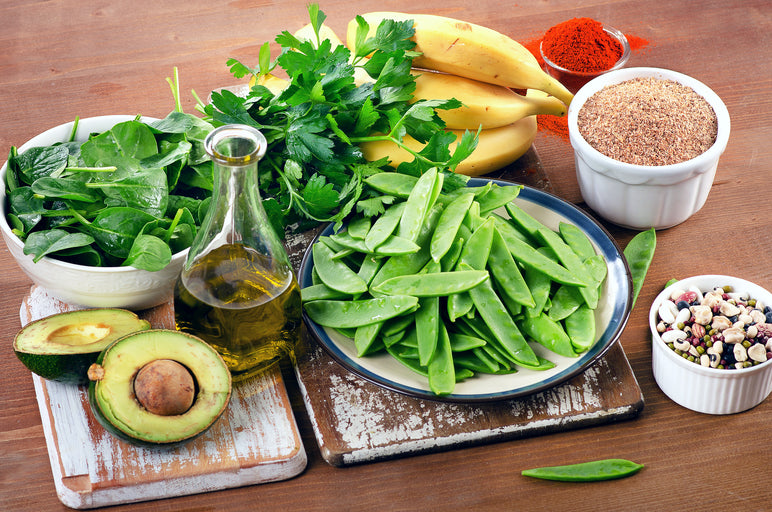What are Superfoods?
Have you ever read two different articles promoting a “superfoods diet”, only to find conflicting information and come away wondering what superfoods are the best? That’s probably because superfood is not a scientific term with specific criteria, but rather a marketing buzzword for foods like blueberries, salmon, kale and almonds, which appear on most any list of superfoods. Superfoods are thought to offer various health benefits because they are dense in nutrients, which may include antioxidant vitamins, polyphenols and other phytochemicals, healthy fats, and fiber, among others.
While consuming nutrient dense foods is key to a healthy diet, it’s more important to ensure a wide variety of naturally colorful foods each day, rather than narrowing down to just a few - even if they are touted as superfoods for health. Research suggests that the ideal diet is one that is largely plant-based, with a wide variety of fruits, vegetables, whole grains and health promoting animal products.*
That said, here is a list of 10 of our favorite superfoods that will help power up your diet and give you the energy you need to perform at your best:
Dark Berries:
Blueberries top many lists of superfoods because they are rich in vitamins, soluble fiber and phytochemicals. The same nutrients are also found in many other kinds of berries, including blackberries, raspberries, cranberries and elderberries. Most people don’t realize that grapes are also berries, and a rich source of proanthocyanidins. Grape seed extract and Resveratrol, a polyphenol found in red grape skin, have long been valued for their high antioxidant capacity, and used to support cardiovascular, venous and cognitive health.*
Legumes:
Beans and peas are a low-fat source of protein and fiber - both insoluble fiber which helps to lower cholesterol, and soluble fiber, which provides a feeling of satiety or fullness. Black beans in particular also include a hearty helping of antioxidants in their dark skins. And pea protein has been found to be one of the most effective proteins for providing a feeling of satiety and appetite regulation.*
Nuts and Seeds:
These contain high levels of minerals, healthy fats and fiber, and a small handful of almonds, walnuts or pumpkin seeds can make a filling snack. Portion control is important, as these foods are dense in calories as well as nutrients. Seeds such as Flax and Chia are nutritional powerhouses that also provide lignans, antioxidant compounds that help support hormone metabolism and promote prostate, breast and bone health.*
Dark Leafy Greens:
Broccoli, kale, Swiss chard, collards, spinach, and cabbage are loaded with Vitamin A, C and K, as well as fiber, calcium and other minerals. Bright orange and yellow veggies such as sweet potato and squash are also often included in superfoods lists for the same reason.
Salmon, tuna, mackerel and certain other fatty fish are rich in omega-3 essential fatty acids EPA and DHA, which are thought to promote cardiovascular, cerebrovascular and cognitive health, mood, and inflammatory balance.* Smaller fish, like sardines and anchovy contain lower levels of mercury than large fish at the top of the food chain, and impurities can be further avoided by choosing a high quality fish oil produced by triple molecular distillation.
Green Tea:
Most people know that green tea is rich in flavonoids with potent antioxidant activity that help to maintain cell and cardiovascular health.* But it also naturally contains the unique amino acid L-theanine, which helps increase alpha brain wave activity, promoting relaxation, stress resistance and a sense of well-being.*
Yogurt and other fermented foods:
Rich in probiotics such as Acidophilus and Bifidobacter, fermented foods such as yogurt, kefir and sauerkraut help promote healthy gut flora, digestion and immune function.*
Garlic:
A star of many types of cuisine, Garlic contains the active compounds Allicin and Alliin, which appear to help maintain normal cholesterol levels, cardiovascular health and immune function.*
Tumeric:
This yellow rhizome is a beloved component of many curries, and contains the potent antioxidant compound curcumin, which helps deplete levels of substance P, a neuropeptide associated with pain sensation.* Curcumin also helps maintain platelet aggregation levels that are already in the normal range, and promotes inflammatory balance.* Traditionally Turmeric is often combined with black pepper, which helps increase it’s bioavailability and absorption.*
Mushrooms:
Known for their earthy flavors and meaty texture, many mushrooms also have medicinal properties related to the high levels of immune-enhancing sugars found in their cell walls, called beta-glucans.* Shitake, Maitake, Cordyceps and Reishi mushroom are all thought to have immune adaptogen properties.
So now that we have our list of superfoods – what if you’re not currently a fan of a particular category – say, fatty fish, fermented foods, mushrooms, or dark leafy greens? It may be time to find some new recipes to discover their appeal; or speak with your practitioner about including a supplement to get that particular superfood’s health benefits.






